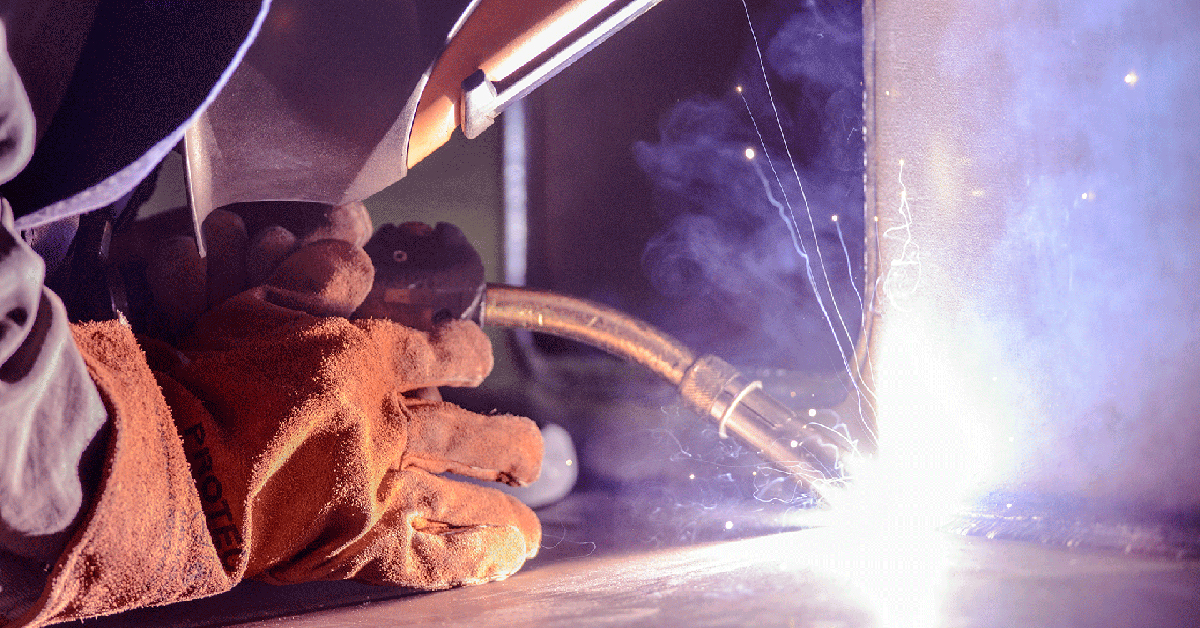Preventing Weld Undercut: Proven Approaches Every Welder Need To Know
Preventing Weld Undercut: Proven Approaches Every Welder Need To Know
Blog Article
Recognizing the Causes and Solutions for Undercut Welding in Metal Fabrication Processes
In the realm of metal fabrication processes, the occurrence of undercut welding positions a considerable difficulty that demands a detailed understanding of its reasons and feasible options. The complex interplay of different aspects during welding operations can result in this unfavorable phenomenon, impacting the structural honesty and total top quality of the bonded joints - Preventing weld undercut. By exploring the origin causes of undercut welding and exploring effective therapeutic actions, makers can raise the requirement of their craftsmanship and guarantee the production of remarkable steel elements
Common Reasons For Undercut Welding
Regularly neglected in steel fabrication, undercut welding happens due to different factors that demand precise interest and expertise to be efficiently alleviated. In addition, inappropriate welding techniques, such as using the wrong welding angle or travel rate, can likewise add to damage development. The selection of welding criteria, such as voltage, existing, and cord feed rate, plays a significant role in the occurrence of undercut welding.
Impact of Incorrect Welding Parameters
Inaccurate welding parameters can dramatically compromise the stability and top quality of bonded joints in metal construction procedures. The influence of incorrect welding specifications shows up in different methods, leading to structural weaknesses and flaws in the bonded elements. Careful attention to welding specifications is vital to ensure the production of premium welds with the wanted mechanical properties and structural stability.
Impact of Improper Torch Angle
Inappropriate torch angle in welding operations can substantially affect the top quality and honesty of the last weld joints in steel manufacture procedures. The torch angle plays a vital duty in determining the heat input and distribution during welding. When the lantern angle is wrong, concerns such as damaging can occur. Undercutting is a typical welding problem where a groove develops along the weld toe, compromising the joint and jeopardizing its structural integrity.
A torch angle that is also high can cause inadequate penetration, insufficient blend, and boosted spatter. On the other hand, a torch angle that is as well superficial can result in excessive infiltration, burn-through, and distortion of the base material. Preventing weld undercut. Proper lantern angle is crucial for making sure constant weld quality, toughness, and appearance
To prevent damaging and other issues brought on by inappropriate lantern angles, welders have to be educated to preserve the proper torch angle throughout the welding process. Normal tracking and adjustment of lantern angles throughout welding can aid accomplish sound welds with marginal problems.
Role of Inadequate Welding Methods

An additional facet of poor welding strategies is inappropriate weld prep work. Insufficient cleansing of the base metals, inaccurate joint this post layout, or not enough side preparation can all add to undercut welding. Furthermore, inadequate shielding gas insurance coverage or making use of the incorrect kind of gas can lead to incomplete blend and the formation of undercut defects.
To resolve the duty of insufficient welding methods in metal fabrication procedures, it is crucial to give detailed training for welders. Appropriate education on welding criteria, joint preparation, and shielding gas option can assist prevent undercut welding and make certain top quality welds in steel fabrication tasks.
Reliable Solutions for Undercut Welding
Dealing with undercut welding in metal construction requires applying efficient solutions to improve weld high quality and architectural honesty. One of the key options to combat undercut is to readjust welding parameters such as voltage, existing, and travel rate to ensure continue reading this correct heat input and combination. By fine-tuning these settings, welders can stop extreme melting of the base steel and filler product, decreasing the chance of undercut formation.
In addition, proper joint prep work is essential in stopping undercut. Ensuring clean base steel surfaces without contaminants and utilizing the appropriate bevel angle can assist advertise far better weld penetration and minimize the threat of undercut - Preventing weld undercut. Employing appropriate welding strategies, such as oscillating the torch or weaving, can likewise assist in dispersing warmth evenly and filling the weld joint appropriately, minimizing the possibility of undercut flaws
In addition, selecting the appropriate welding consumables, including electrodes and filler metals, is necessary in minimizing undercut. Using products with proper chemical make-ups and mechanical homes can add to achieving sound welds with minimal undercut. Routine evaluation and quality assurance procedures must additionally be executed to discover and address undercut issues quickly, guaranteeing the general stability of fabricated metal components.

Conclusion
In conclusion, recognizing the reasons and solutions for undercut welding in metal construction processes is important for accomplishing premium welds. By attending to typical causes such as wrong welding criteria, incorrect lantern angle, and poor welding methods, welders can avoid undercutting and make certain solid, long lasting welds. It is important to take notice of these elements and implement reliable options to improve the total welding procedure and end product top quality.

Report this page